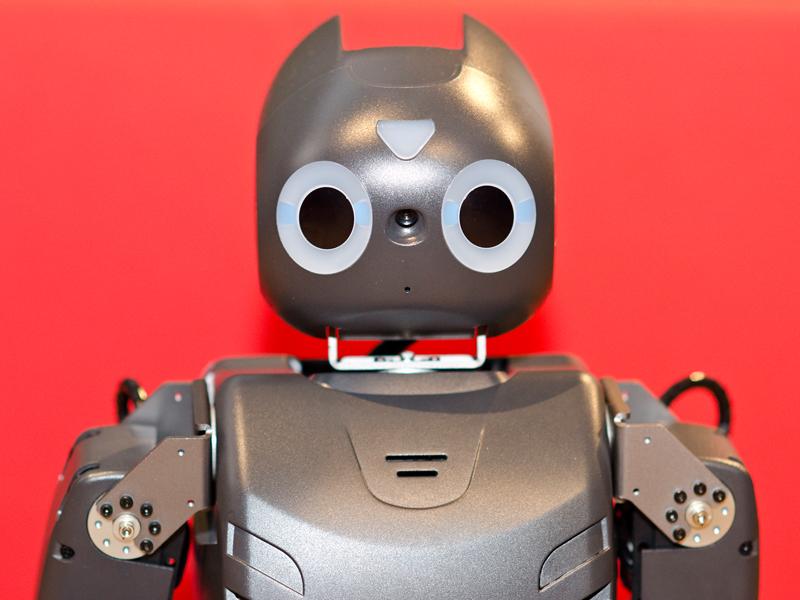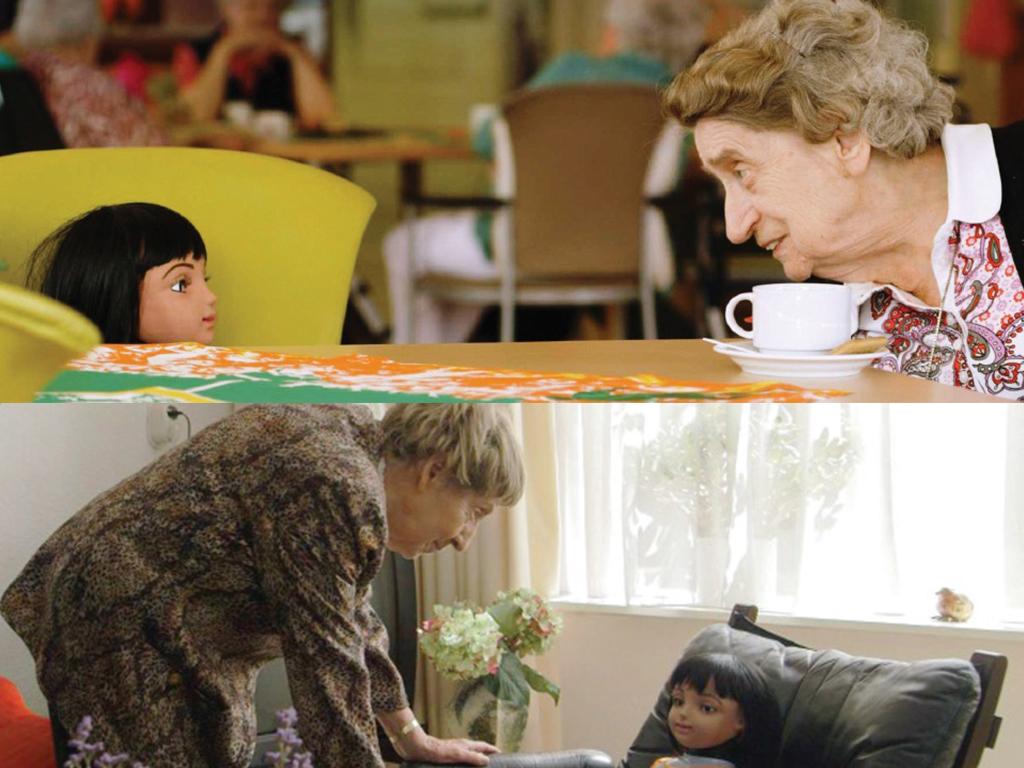Danielle Arets, associate lector Strategic Creativity Design Academy Eindhoven, visited the workshop “Open Robotics for Health” and reported on the event.
During the workshop Living Labs for Healthy Ageing, organised by the Creative Care Lab of Waag, a group of 40 experts in this field explored how a living lab approach and service design can be used to develop product service systems (PSS) around caredroids.
The role of robots
The day kicked off with pressure-cooker presentations of 90 seconds to set the scene by various experts in the field. Sabine Wildevuur, head of the Creative Care Lab of Waag, described the role of robots in society and in the medical field and the change of industrial robots to service robots. With the example of the Hitchbot, a robot which hitchhiked on its own through all of Canada, to increase the acceptance of robots in society. Geke van Dijk, co-founder and strategy director of STBY briefly explained the role of service design within robotics stating that robots also need to “sense, to plan, to react, to respond to uncertainty. They have to act and react.”
Dick van Dijk, Creative Director at Waag stressed the importance of involving users in the process. Janine Huizinga, former creative director of Waag and co-founder of Street Challenge Europe, elaborated on building a Product Service System around the robot; how do robots fit into a community, what services, tools and applications are needed to design an “open” system around them? Also important to mention is how this relates to ideas of open design, where not one but a team of designers and other experts is working towards a PSS, as was explained by Taco van Dijk, developer at Waag.
Challenges
After these explanatory presentations, the participants were asked to work in small groups on various cases defined by Pieter Divendal (OLVG Hospital, Amsterdam) and Leo Versteegh (AMSTA care organisation, Amsterdam). The groups were challenged to define modules needed for the robot, and to design a PSS system around it. One of the groups worked on the challenge to think around the product service system around a robot for walkers. They needed to design a robot that supports people with a walker to store it at public events (cinema, bingo or elsewhere) as well as to prevent the walkers to stand in the way and to bring them back once the event is finished.
Personalised Walkers
The group immediately thought it crucial that these robots should be customised and personalised; “after all you can’t give other people the wrong fake teeth – as it happens sometimes in nursing homes” as one of the group members explained.
The bots could potentially have a tag or barcode that is connected to personal data. Also image or voice recognition could work as an application for this. The walker should also definitely be a versatile module and it should be super flexible so that they can easily be stored in public environments. Furthermore they should have sensors that prevent them from bumping into others and they need to know very accurate when they need to start and stop.
In order to think of what else would be needed apart from the robot to make it work (in other words a PSS system), the group thought that except from technology and production a group of software and service designers is needed to design all the applications as well as to take care of the maintenance like recharging and cooling down of the system. Besides a “community champion” is needed to make smart connections of all the stakeholders, meaning the people building, using and maintaining the system, involved.
No more waiting rooms
Another group was challenged to thinker around the question how robots could be a help them in finding their way in hospitals and care institutes, for example guiding patients to the waiting room, their living room or bedroom, etc. This group not only thought of robots that could possibly push a wheelchair, but how they could “redesign the system”, as Mickael Boulay, designer at Waag, presented. “If we use robots as time keepers, connecting them to the doctor's schedule, then they could easily distract the patients, make a short detour and make sure that they arrive exactly on time. In other words in a few years we do not need waiting rooms anymore.”
Except from the fact that all groups managed (in a very short timeframe) to come up with a very detailed and innovative PSS system, it became very clear that they all faced robotics with optimism. All participants seemed to agree that technology is not the destiny but an opportunity for health and care applications and that we need to think of ways of embedding caredroids in the care system. The robot is definitely not a toy but a tool to design with. Besides, as was already addressed by Geke van Dijk in the morning sessions, the robots will also act and react. In other words, we will also need to take care of them as well. Janine Huizinga stated it very nicely: “If you don’t feed the cat it follows you. That might happen with robots as well. We need to take care of them.”


